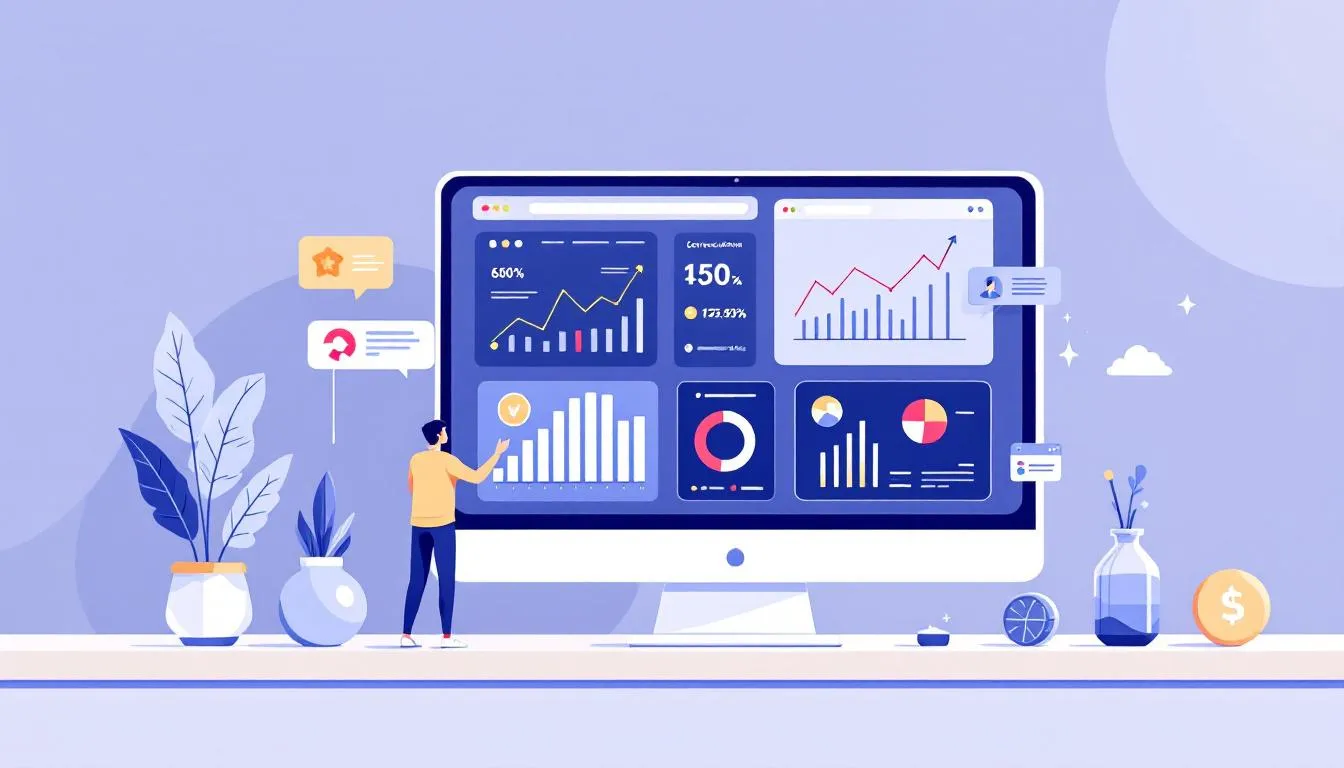Feeling frustrated because your website isn’t showing up on Google, even if you think you should be? You’re not alone, and the reasons could be more common than you think. This article will walk you through the typical culprits and explain why you’re not showing up on google even if you think you should be, as well as how to address them to get your site noticed by Google.
Key Takeaways
- Understanding how Google indexes and ranks web pages is essential for optimizing your site’s visibility in search results.
- Ensuring your site is technically sound, including mobile optimization and quality content, is crucial for overcoming common SEO pitfalls.
- Engaging with customer reviews and utilizing local SEO strategies can significantly enhance your visibility in local search results.
Understanding How Google Search Works

Understanding why your website isn’t appearing on Google starts with knowing how Google’s search engine functions. The process involves:
- Google using crawlers to explore the web, discover and automatically add pages to its search index.
- Google analyzing the content of the crawled pages. Google’s written guidelines and Search Essentials outline best practices for content structure, including the use of headings, which help organize information and improve both user experience and search engine understanding.
- Storing relevant information in its vast database.
Google Search Console is an invaluable tool that allows you to assess your site’s performance, monitor issues, and rectify errors that might be affecting your visibility. This tool provides insights into how google’s search engine perceives your site, allowing you to make improvements to your search engine optimization. Additionally, Google’s Sitemaps program is another program that assists webmasters in optimizing site indexing and crawling.
Ever wondered how Google decides which pages to show in response to search queries? It all boils down to factors like keywords, page relevance, and Google’s complex PageRank algorithm. Following Google’s written guidelines is crucial for ranking. Grasping these mechanisms helps you tailor your site to meet Google’s criteria, enhancing your search results.
Ensuring Your Site is Indexed
One of the most fundamental aspects of search engine optimization is ensuring that your site is indexed. Indexing is the process by which search engines catalog web pages to include them in their search results. Leading search engines like Google use crawlers to find pages for their search results.
Your site must be publicly accessible to be indexed by Google. You can check if your site is indexed by using the site: operator in a Google search. Additionally, the URL Inspection Tool in Google Search Console can show you how Google views your pages.
Submit a sitemap, which is a file containing all the URLs on your site, is another crucial step. This acts as a guide for search engines, facilitating the indexing of your content. Organizing your site into clear directories also helps search engines crawl and index your content more efficiently by indicating content grouping and update frequency.
If your site isn’t indexed, checking for technical issues that might be causing invisibility is necessary. Also, be aware that having multiple URLs for the same content can cause indexing problems; use canonical tags or redirects to manage these and ensure proper indexing.
Common Technical Issues Blocking Visibility

Technical issues can be a significant barrier to your website’s visibility. Improper configuration of the robots.txt file is a common issue that can restrict web crawlers from accessing essential parts of your website. Wildcards in the robots.txt file can inadvertently block crucial URLs from being crawled.
Search engines require access to JavaScript, CSS, and image files to render pages correctly, so ensure these resources are not blocked in your robots.txt file. Broken links can also hinder indexing, as they prevent crawlers from navigating your website effectively. Additionally, it is important to use the nofollow attribute on outbound links, especially in user-generated content such as forum posts, to prevent spam and maintain SEO integrity.
Page load speed is another critical factor. Crawlers have limited time to access and index pages, so a slow-loading site can negatively impact your visibility. Avoid blocking removed pages in robots.txt so that Google can crawl them and recognize their status, as well as other pages.
Importance of High-Quality Content

Creating high-quality content is paramount for improving your website’s visibility. Such content must align with user intent and provide answers to users’ questions. Key attributes of high-quality content include originality, relevance, well-structured metadata, and thoughtful manipulation of the HTML source. Google’s algorithms prioritize content that showcases expertise and provides reliable information.
Creating original and insightful writing content can greatly improve your website’s rankings in search results. Using clear headings to organize information not only enhances user experience but also helps search engines better understand your content, improving SEO. Focusing on valuable and relevant content for your audience enhances your site’s overall search engine optimization, especially when creating content that resonates with users and includes the word that captures their interest. This content is created to generate engagement and inform.
Improving Your Website’s Appearance in Google Search
Enhancing your website’s appearance in Google Search is a key step in increasing your online visibility and attracting more visitors. Effective search engine optimization (SEO) ensures that your website is not only found by search engines but also stands out in search results. By focusing on SEO best practices, you can improve your website’s ranking, making it more likely that users will click through to your site when they see it in Google search.
Optimizing your website involves refining everything from your page titles and meta descriptions to your structured data and internal linking. These elements help search engines understand your content and display it attractively in search results. The better your site looks and reads in Google’s listings, the more likely you are to drive traffic and boost conversions. Remember, SEO is an ongoing process—regularly reviewing and updating your site ensures you maintain and improve your ranking and visibility over time.
Local SEO Factors
Local SEO is a focus on optimizing your online presence to attract more business from relevant local searches. Effective local SEO strategies help a company attract more local clients who are searching for their services online. Factors like proximity, relevance, and customer reviews play a crucial role in determining your visibility in local search results. Promoting local events through your business profile is also an effective way to engage customers and increase your company’s visibility.
Proximity and Relevance
Proximity plays a significant role in local search rankings. The difference in distance from the searcher to a business in London often determines which businesses appear in location-based results. Businesses located nearer to potential customers are more likely to appear at the top of local search results, which can address the needs of those customers effectively.
Relevance is equally important. Your business must be relevant to the search query to rank higher, with consideration given to using the right keywords and optimizing your business listings to match what potential customers are searching for.
Reviews and Ratings
Customer reviews and ratings significantly influence local SEO in the following ways:
- The quantity and positivity of customer reviews can enhance a business’s prominence in local search results.
- Actively responding to reviews indicates to Google that you value customer feedback.
- Valuing customer feedback through responses can improve your local ranking.
Positive review and active engagement with feedback not only improve your online reputation but also enhance your visibility in local search results. Encouraging satisfied customers to leave reviews can be a powerful strategy for boosting your local SEO, and it can also guarantee better results.
Mobile Optimization

Mobile optimization is crucial in today’s digital landscape. Google prioritizes mobile-friendly sites during indexing, so having a mobile-optimized website is crucial. Google announced mobile-first indexing in November 2016, meaning it primarily uses the mobile device version of the content for indexing and ranking.
Utilizing responsive web design ensures that your website adapts to various screen sizes, providing a seamless experience for mobile users to respond. Developed Accelerated Mobile Pages (AMP) can greatly enhance loading speeds for mobile users, improving their overall experience.
Checking your site’s Core Web Vitals regularly via Search Console ensures optimal performance across devices. These metrics are essential for assessing the speed, responsiveness, and visual stability of your site to verify its performance on mobile devices.
Avoiding Duplicate Content
Duplicate content refers to the same content being accessible under different URLs. While having duplicate content isn’t a violation of spam policies, it can negatively impact your search visibility. Search engines typically choose a canonical URL to display to users when they encounter duplicate content. Additionally, if other websites link to different versions of your content, it can influence which page search engines prioritize in their rankings.
Canonical URLs indicate to search engines which version of a given page should be prioritized for indexing in the domain. When choosing a domain, note that extensions like .org generally have minimal impact on SEO unless you are targeting specific countries or niche audiences. Redirecting outdated or redundant pages to a preferred version helps manage duplicate content issues effectively.
It’s also important to include only the primary version of a page in the XML sitemap to minimize duplicate content. Using absolute URLs in canonical tags avoids ambiguity about the preferred page.
Enhancing User Experience
A faster page load time significantly boosts user satisfaction and can lead to improved search engine rankings. User experience, including factors like page load speed, plays a critical role in search engine rankings.
Intuitive site navigation helps users find information more easily, decreasing bounce rates and enhancing SEO performance in the uk. Maintaining a clear relationship between images and content is essential, as it helps search engines understand your pages and improves overall SEO. Minimizing intrusive ads contributes to a better user experience and encourages visitors to stay longer on your site.
Positive user experiences are increasingly being used as a ranking factor by search engines, affecting overall visibility. Improving readability and user engagement metrics significantly boosts your site’s search engine optimization.
Leveraging Backlinks
There are many ways to earn backlinks, including content marketing, outreach, and partnerships.
Editorial backlinks, earned through the value of your writing content, are among the most beneficial for SEO. Links from free sites relevant to your industry carry more weight than those from unrelated sources at this target point. Words from your writing can enhance this linked value and help you claim that advantage.
Creating guides and infographics as part of your content marketing strategy can attract natural backlinks. Identifying and replacing broken links on external websites with relevant content from your site is another valid method for earning backlinks.
Quality anchor text plays a crucial role in backlink effectiveness, providing context to both users and search engines. Monitoring backlinks helps understand which content attracts links, allowing you to adjust strategies accordingly.
Monitoring and Adjusting Your SEO Strategy

Webmasters can monitor their site’s indexing status and improve search rankings by:
- Using tools like Google Search Console to monitor indexing status
- Maintaining content freshness by regularly updating articles
- Encouraging frequent updates and employing various methods to promote search engine crawling and boost site rankings through various programs.
Regularly monitoring your SEO performance is essential for making informed adjustments based on data insights.
Summary
In summary, there are numerous factors that can prevent your site from appearing on Google. From ensuring proper indexing and addressing technical issues to creating high-quality content and leveraging backlinks, each step is crucial. Local SEO, mobile optimization, and avoiding duplicate content are also key areas to focus on.
By understanding and addressing these common SEO pitfalls, you can improve your site’s visibility and attract more traffic. Implement these strategies, monitor your progress, and adjust your approach as needed. Success in SEO is a continuous journey, but with diligence and the right tactics, you can achieve and maintain a strong online presence.
Learn more about how an inexpensive local seo plan can drive phone calls and site visits. CLICK HERE
Frequently Asked Questions
Why isn’t my site showing up on Google?
If your site isn’t appearing in Google search results, there are several possible reasons. First, check whether your site is indexed by Google by searching for your URL using the “site:” operator. If your site doesn’t show up, it may not be indexed yet. Make sure your site is accessible to Google’s crawlers and that you haven’t unintentionally blocked them with your robots.txt file. Additionally, review your Google Search Console account for any indexing errors or issues that could be preventing your site from appearing in search results. Addressing these technical barriers is the first step to ensuring your site is visible in Google search.
How can I check if my site is indexed by Google?
To determine if your site is indexed by Google, start by using the Google Search Console. This free tool provides detailed information about your site’s indexing status, crawl activity, and any technical issues that might affect visibility. You can also use the “site:” search operator in Google search to see which of your pages are currently indexed. For a more comprehensive approach, submit a sitemap through Google Search Console. This helps Google discover and index all the important pages on your website, ensuring your content is available in search results.
What is the importance of local SEO?
Local SEO is essential for businesses targeting customers in specific geographic areas. By optimizing your website for local search queries, you increase your chances of appearing in search results when users look for services or products near them. Creating content tailored to your local audience, ensuring your business’s address and contact information are accurate, and building local citations all contribute to better local SEO. These efforts help your website become more relevant to local searchers, improving your visibility and attracting more customers from your community.
How do customer reviews impact local SEO?
Customer reviews are a powerful factor in local SEO. Positive reviews can boost your business’s visibility in search results and enhance your reputation, making potential customers more likely to choose your business. Google considers the number, quality, and diversity of reviews when ranking businesses in local search results. Actively encouraging customers to leave reviews on your Google My Business profile and responding to feedback—both positive and negative—demonstrates your commitment to customer service. This engagement not only improves your SEO rankings but also builds trust with your audience, driving more traffic and conversions.
Customer reviews significantly impact local SEO by boosting your business’s visibility in search results and enhancing your online reputation. Engaging with feedback further strengthens this advantage.
Why is mobile optimization important for SEO?
Mobile optimization is essential for SEO because Google favors mobile-friendly sites in its indexing, and it enhances the user experience across devices, which ultimately boosts your overall SEO performance.

